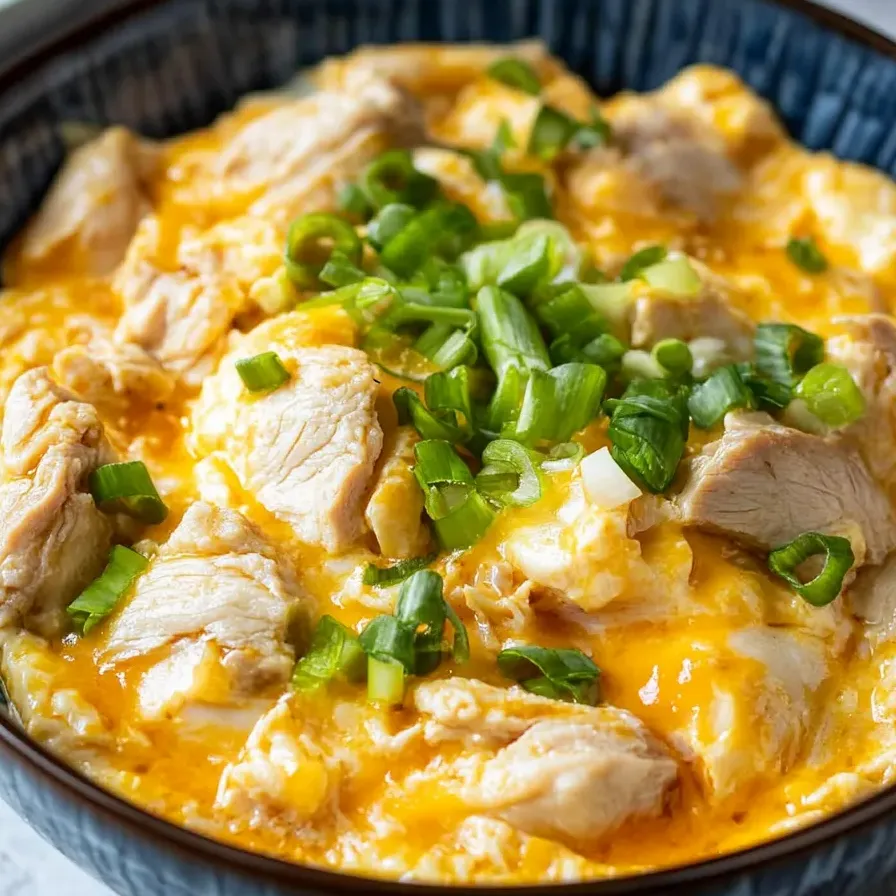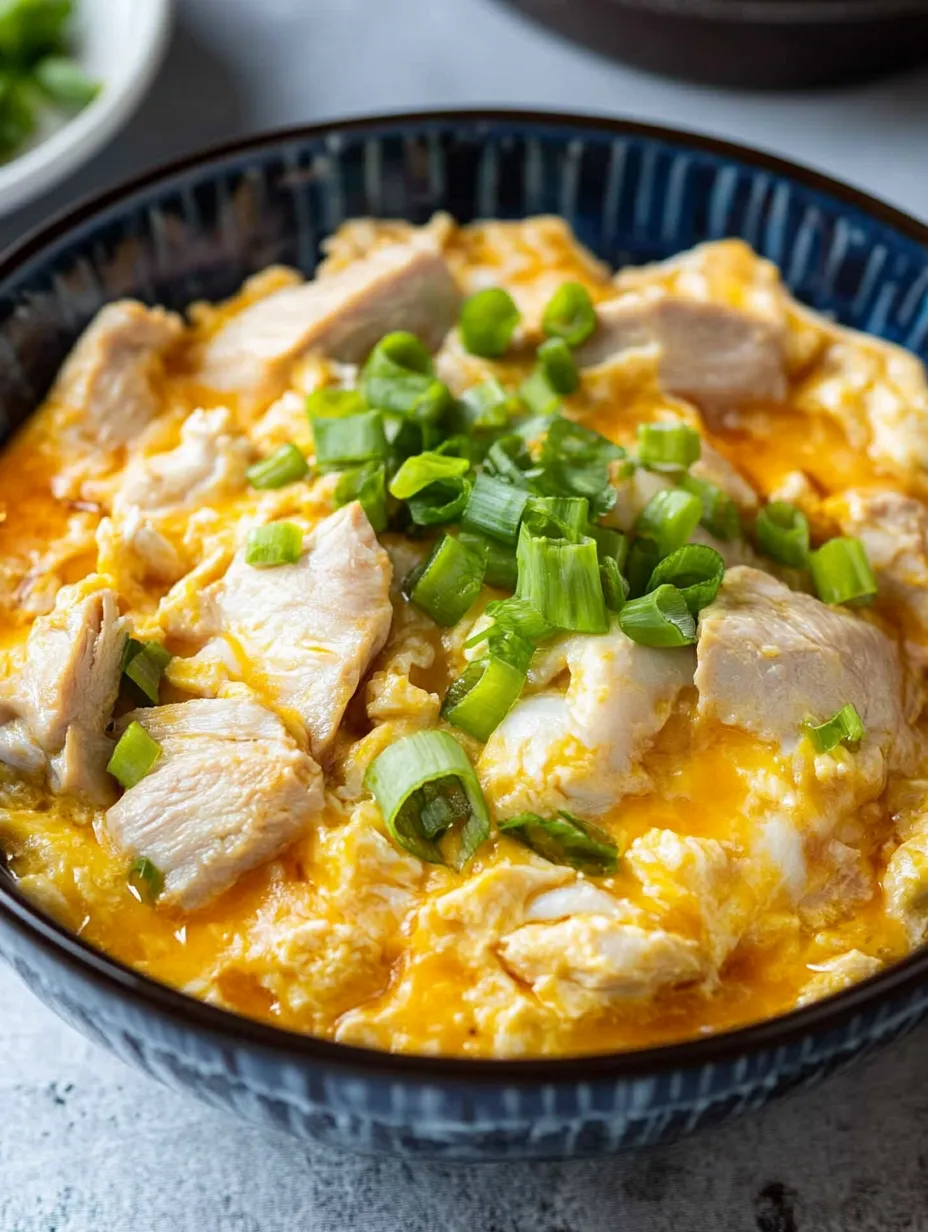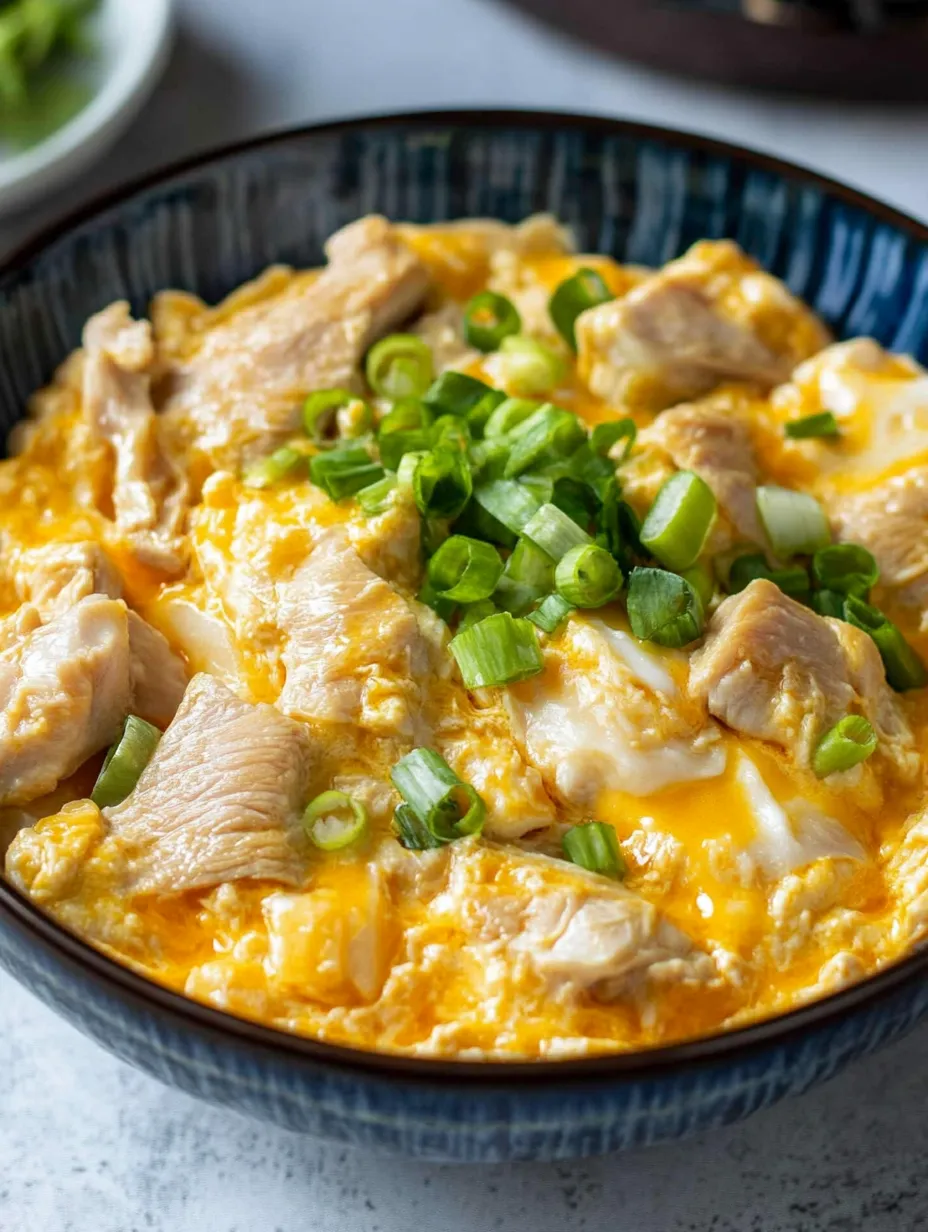 Save
Save
This speedy 15-minute Japanese chicken and egg bowl turns basic ingredients into a wow-worthy dinner that's become my go-to when I need something tasty yet impressive without much work.
I've fallen back on this dish so many times when friends drop by without notice. The first time I made it, my buddy from Japan said it tasted just like home, and it's been my confidence booster ever since.
What You'll Need
- Boneless chicken thighs: they stay juicy and add extra flavor because of their natural fat
- Large eggs: slightly beaten to create pretty gold streaks through the dish
- Chicken or dashi stock: gives that deep savory base everyone loves
- Thinly sliced onion: gets nice and sweet as it cooks down
- Mirin: this sweet rice wine brings that true Japanese taste
- Regular soy sauce: adds salt and color - try to grab naturally brewed if you can
- Sake: makes the chicken super tender and adds depth
- Granulated sugar: works with the savory stuff for perfect balance
- Green onion: adds a pop of color and fresh flavor at the end
- Cooked rice: short-grain Japanese rice works best for the right feel
Easy Cooking Method
- Get your chicken ready:
- Chop chicken thighs into 1-inch chunks so they cook fast. Put them in a bowl with sake and mix them around. Let them sit while you handle the other stuff. The sake doesn't just add flavor - it makes the meat really tender.
- Fix up your eggs:
- Break eggs into a bowl and stir them just a little bit - stop when they're about halfway mixed. This way, you'll get those pretty streaks of white and yellow instead of just one boring color. It makes the dish look much nicer.
- Mix your sauce:
- Get a small pan about 7 inches across and pour in your chicken stock or dashi, soy sauce, mirin, and sugar. Stir until all the sugar melts. This makes a yummy sweet-salty mix that flavors everything.
- Cook everything:
- Spread your onion slices across the bottom of the pan. Lay the chicken pieces on top in a single layer and let them cook for 2 minutes. Flip each piece over, then pour your partly-mixed eggs over everything in a circle. Cook another 2 minutes until eggs are mostly set but still a bit runny on top.
- Put it all together:
- Fill a big bowl with hot rice and flatten the top a little with your spoon. Carefully slide everything from the pan right onto the rice, trying not to break up the eggs too much. Sprinkle fresh green onions on top right away.

What I love most about this dish is how the slightly runny eggs make this amazing silky sauce that soaks into the rice. When my kid first tasted it, she told me it was better than the restaurant version - talk about a proud cooking moment!
Keeping Leftovers
This tasty bowl keeps really well in the fridge. Just pop leftover portions in a sealed container and they'll stay good for up to 4 days. The funny thing is, it actually tastes better the next day because the sauce soaks into everything overnight. To warm it up, just microwave for 2-3 minutes with a damp paper towel on top so it doesn't dry out, or heat it slowly in a covered pan on medium-low until it's just hot enough.
Ingredient Swaps
Though the real deal uses specific Japanese items, you can totally switch things up. No sake? Try dry sherry or even white wine for that same meat-tenderizing magic. Don't drink alcohol? Just use more stock with a splash of rice vinegar. You can swap chicken breasts for thighs if you want something leaner, but cook them for less time so they don't get dry. If you don't eat meat, firm tofu works great - just press out the water and give it a quick fry before adding it to the sauce.
Food History
Oyakodon shows off what makes Japanese comfort food so special - tasty toppings over a bowl of rice. The name has a sweet meaning: parent and child bowl, talking about using both chicken and eggs together. This dish started becoming popular in the late 1800s during the Meiji period and caught on as a quick, filling meal for busy workers. The way it balances sweet, salty, savory, and tangy flavors shows how Japanese cooking tries to create harmony in every bite.

Frequently Asked Questions
- → Can I substitute the chicken thighs with something else?
You can swap chicken thighs for breast meat, but it might not be as juicy. For folks who don't eat meat, try firm tofu, various mushrooms, or fake chicken products. Just watch your cooking time as these might cook faster or slower.
- → What if I don't have sake or mirin?
No sake? Grab some dry sherry or mix rice vinegar with a bit of sugar instead. Missing mirin? Mix 1 tablespoon of sweet rice wine or combine 1 tablespoon rice vinegar with ½ teaspoon sugar as a stand-in.
- → What is dashi stock and what can I use instead?
Dashi comes from simmering kombu seaweed and bonito flakes. You can use chicken stock as the recipe suggests, or grab instant dashi powder and mix with water. In a hurry? A light veggie broth with a few drops of fish sauce works okay too.
- → Why are the eggs only beaten to 65% mixed?
This trick makes pretty white and yellow streaks in your food and gives you different textures in each bite. If you want, you can mix them completely, but you'll get one solid color and feel throughout the dish.
- → Can I prepare any components of this dish ahead of time?
Absolutely! Cut and marinate your chicken up to a day ahead, chop onions early, and cook rice beforehand. Keep everything in separate containers in your fridge, then throw it all together when you're ready to eat.
- → Is this dish known by another name in Japan?
This dish is basically Oyakodon, which means 'parent-and-child bowl' in Japanese because it has both chicken and eggs. The usual way to make it involves cooking everything in one pan and putting it on top of rice.
